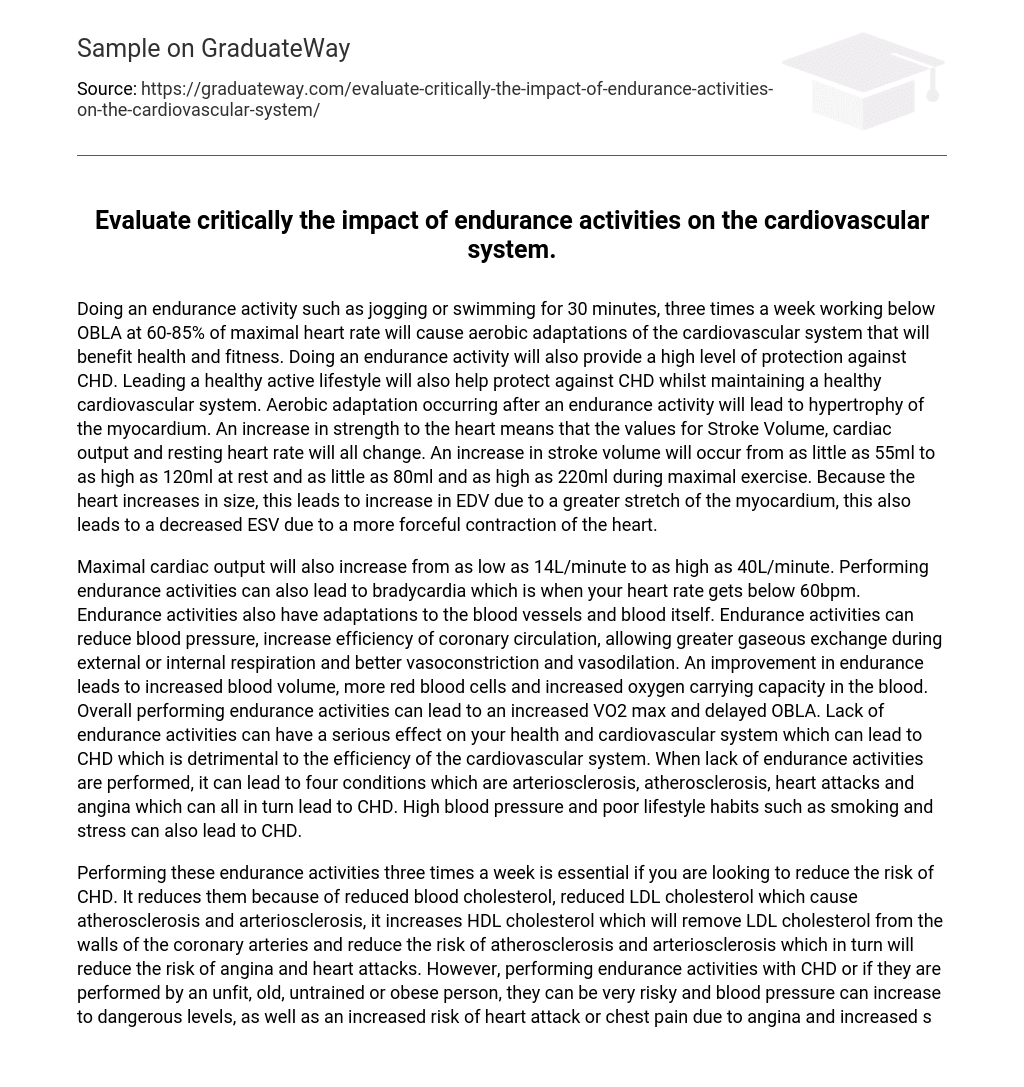Doing an endurance activity such as jogging or swimming for 30 minutes, three times a week working below OBLA at 60-85% of maximal heart rate will cause aerobic adaptations of the cardiovascular system that will benefit health and fitness. Doing an endurance activity will also provide a high level of protection against CHD. Leading a healthy active lifestyle will also help protect against CHD whilst maintaining a healthy cardiovascular system. Aerobic adaptation occurring after an endurance activity will lead to hypertrophy of the myocardium. An increase in strength to the heart means that the values for Stroke Volume, cardiac output and resting heart rate will all change. An increase in stroke volume will occur from as little as 55ml to as high as 120ml at rest and as little as 80ml and as high as 220ml during maximal exercise. Because the heart increases in size, this leads to increase in EDV due to a greater stretch of the myocardium, this also leads to a decreased ESV due to a more forceful contraction of the heart.
Maximal cardiac output will also increase from as low as 14L/minute to as high as 40L/minute. Performing endurance activities can also lead to bradycardia which is when your heart rate gets below 60bpm. Endurance activities also have adaptations to the blood vessels and blood itself. Endurance activities can reduce blood pressure, increase efficiency of coronary circulation, allowing greater gaseous exchange during external or internal respiration and better vasoconstriction and vasodilation. An improvement in endurance leads to increased blood volume, more red blood cells and increased oxygen carrying capacity in the blood. Overall performing endurance activities can lead to an increased VO2 max and delayed OBLA. Lack of endurance activities can have a serious effect on your health and cardiovascular system which can lead to CHD which is detrimental to the efficiency of the cardiovascular system. When lack of endurance activities are performed, it can lead to four conditions which are arteriosclerosis, atherosclerosis, heart attacks and angina which can all in turn lead to CHD. High blood pressure and poor lifestyle habits such as smoking and stress can also lead to CHD.
Performing these endurance activities three times a week is essential if you are looking to reduce the risk of CHD. It reduces them because of reduced blood cholesterol, reduced LDL cholesterol which cause atherosclerosis and arteriosclerosis, it increases HDL cholesterol which will remove LDL cholesterol from the walls of the coronary arteries and reduce the risk of atherosclerosis and arteriosclerosis which in turn will reduce the risk of angina and heart attacks. However, performing endurance activities with CHD or if they are performed by an unfit, old, untrained or obese person, they can be very risky and blood pressure can increase to dangerous levels, as well as an increased risk of heart attack or chest pain due to angina and increased stress on the cardiovascular system.





